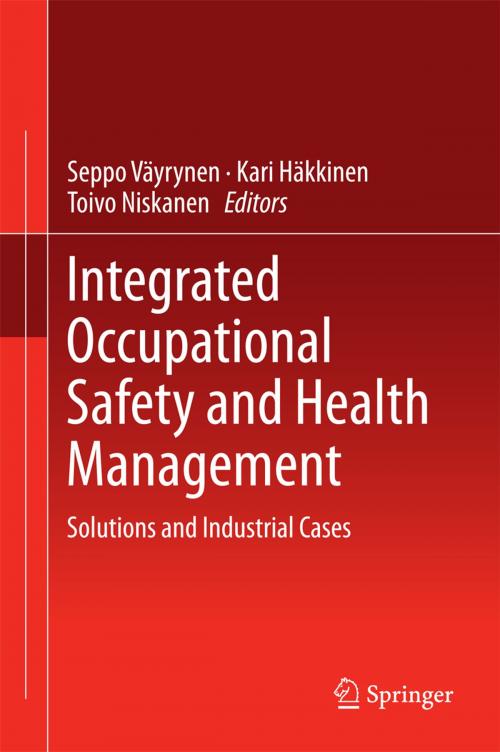Integrated Occupational Safety and Health Management
Solutions and Industrial Cases
Nonfiction, Health & Well Being, Medical, Specialties, Occupational & Industrial Medicine, Business & Finance, Management & Leadership, Management, Science & Nature, Technology| Author: | ISBN: | 9783319131801 | |
| Publisher: | Springer International Publishing | Publication: | December 27, 2014 |
| Imprint: | Springer | Language: | English |
| Author: | |
| ISBN: | 9783319131801 |
| Publisher: | Springer International Publishing |
| Publication: | December 27, 2014 |
| Imprint: | Springer |
| Language: | English |
Maximizing reader insights into a new movement toward leadership approaches that are collaborated and shared, and which views Occupational Safety and Health (OSH) and performance excellence within the wider examination of leadership relationships and practices, this book argues that these relationships and processes are so central to the establishment of OSH functioning that studying them warrants a broad, cross-disciplinary, multiple method analysis.
Exploring the complexity of leadership by the impact that contexts (e.g., national and organizational culture) may have on leaders, this book discusses the related literature, then moves forward to show how a more comprehensive practical approach to Occupational Safety and Health and performance excellence can function on levels pertaining to events, individuals, groups, and organizations. This book proposes that greater clarity in understanding leadership in Occupational Safety and Health and performance excellence can be developed from addressing two fundamental issues. Firstly, how do subunit inputs and processes combine to produce unit-level outcomes and how does leadership affect this process? Secondly, how do the leaders influence the way that individual-level inputs are combined to produce organizational outputs. In these issues, the alternative methodologies that allow precise measurement of organizational outputs in OSH and performance excellence are reviewed.
To help readers navigate through the best practices, each chapter contains Question Guidelines, Exercises and Case studies which illustrate the concepts discussed and which serves to highlight the key evidence demonstrating that collaborative leadership can positively affect individual, group, and organizational level outcomes, including organizational OSH and performance excellence.
Maximizing reader insights into a new movement toward leadership approaches that are collaborated and shared, and which views Occupational Safety and Health (OSH) and performance excellence within the wider examination of leadership relationships and practices, this book argues that these relationships and processes are so central to the establishment of OSH functioning that studying them warrants a broad, cross-disciplinary, multiple method analysis.
Exploring the complexity of leadership by the impact that contexts (e.g., national and organizational culture) may have on leaders, this book discusses the related literature, then moves forward to show how a more comprehensive practical approach to Occupational Safety and Health and performance excellence can function on levels pertaining to events, individuals, groups, and organizations. This book proposes that greater clarity in understanding leadership in Occupational Safety and Health and performance excellence can be developed from addressing two fundamental issues. Firstly, how do subunit inputs and processes combine to produce unit-level outcomes and how does leadership affect this process? Secondly, how do the leaders influence the way that individual-level inputs are combined to produce organizational outputs. In these issues, the alternative methodologies that allow precise measurement of organizational outputs in OSH and performance excellence are reviewed.
To help readers navigate through the best practices, each chapter contains Question Guidelines, Exercises and Case studies which illustrate the concepts discussed and which serves to highlight the key evidence demonstrating that collaborative leadership can positively affect individual, group, and organizational level outcomes, including organizational OSH and performance excellence.















